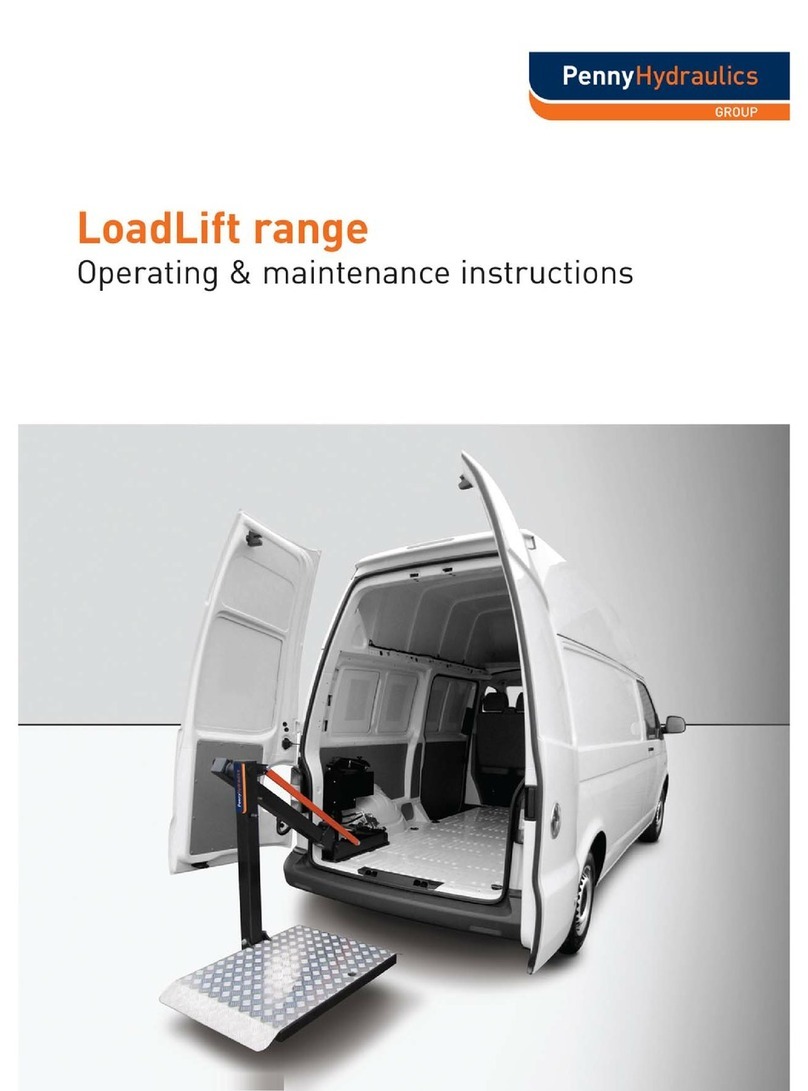
7
Penny Hydraulics Limited Warranty Policy
This Policy is intended to provide our customers with the best possible support to ensure
trouble free use of their new Penny Hydraulics lifting equipment.
Products sold by the Company are guaranteed to be free from defective material and
workmanship for a period of one year from the date of invoice or from the date of the
commissioning certificate.
This warranty applies only under the following conditions:
a) The unit or part must not have been subject to neglect or abuse, or operated under
abnormal conditions or in an unapproved application.
b) The responsibility of the Company is restricted to what is, in their judgement an
adequate repair or replacement of the Company’s product.
c) An authorised and competent engineer must carry out a six monthly inspection and
make adjustments as necessary.
d) The warranty is void if examination reveals that the unit or part has been repaired
or adjusted other than by an authorised engineer.
e) Normal service repairs carried out by authorised engineers are supported by their
own warranty.
f) Warranty does not extend to consumable items requiring replacement due to
normal wear and tear.
Any claim under warranty must be made in the first instance by contacting Penny
Hydraulics Ltd Service Department on 01246 811475 or via email at
negotiation with the customer.
UK Mainland
We will normally have one of our own engineers based around the country visit the site to
rectify the problem. This policy may be varied at our discretion but it is our aim to give the
very best possible response to minimize product downtime and inconvenience.
Other Locations
Warranty is limited to a parts only service but in certain areas we have service partners
who may be able to assist. Any defective item should be returned to Penny Hydraulics Ltd
for inspection and any valid warranty claim will include reasonable carriage costs both
ways. A replacement part will then be sent to the customer.
No variation of the warranty as stated in the Company’s Standard Terms and Conditions of
Sale is authorised unless agreed in writing by a Director of the Company. This is the only
warranty given and the Company accepts no other responsibility.





























